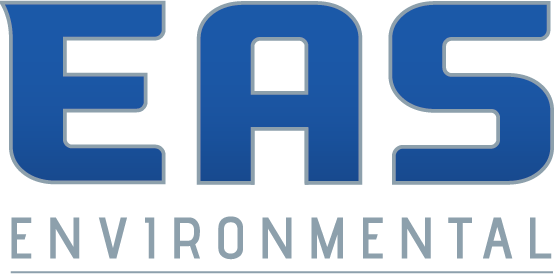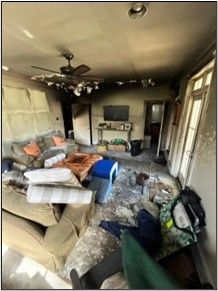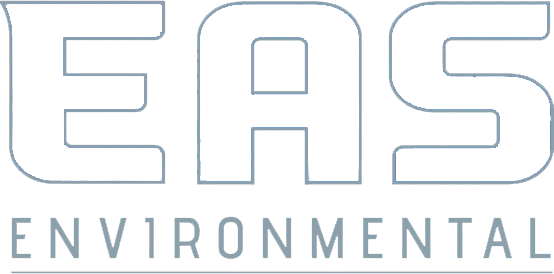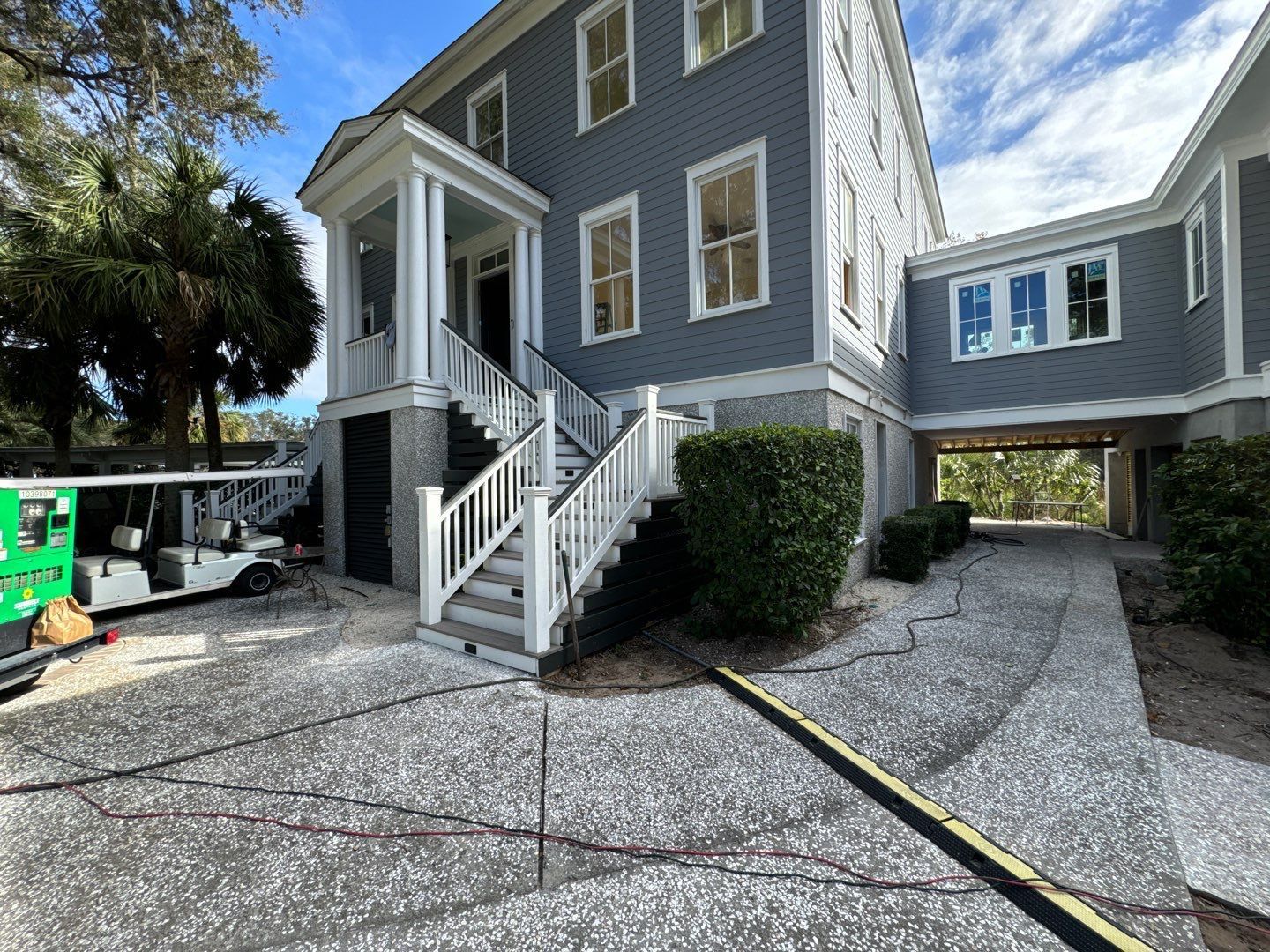
It doesn’t take a massive fire to cause a lot of damage. In fact, even a small electrical fire can fill your entire home with thick smoke, leaving behind soot on surfaces and that stubborn burnt smell that just won’t go away. That’s exactly what happened in one home we recently worked on—and it’s a great example of how EAS Environmental steps in quickly with expert fire damage mitigation and structural cleaning services to make things right again
Abstract
A small electrical fire broke out on the first floor in a luxury Daufuskie Island home while its owners were away. Thankfully it was extinguished quickly—but the damage didn’t stop there. Smoke and soot spread fast throughout the structure, leaving behind visible residue and a stubborn odor on all three floors and the attic. In this case study, we walk through how our company, EAS Environmental, responded with expert fire damage mitigation and structural cleaning to restore the property to its pre-loss condition. From surface cleaning and soot removal to advanced odor elimination techniques, our team preserved key features of the home—including cabinets, crown molding, and vents—without the need for costly replacements. Read on to see how fast, professional action can make all the difference after a fire.
The Situation: Smoke Everywhere
The homeowner had an electrical fire start on the first floor of his home. Thankfully, it was put out quickly, however the smoke traveled fast, coating surfaces and leaving a heavy odor behind.
From the ceilings to the ceiling fans, crown molding, cabinets, vents, and more—soot covered nearly every surface, and the smoke odor had penetrated deep into the structure of the home.
Luxury Home on Daufuskie Island, SC
Our Solution: Fire Mitigation & Structure Cleaning
Our team got to work right away with a comprehensive structural cleaning and fire mitigation plan to get the home back to its pre-loss condition.
Step 1: Content Manipulation/Removal, Demo
We started by tackling the visible mess:
● We removed all non-salvageable contents from the home.
● We started and finished demolition of affected building materials (i.e., drywall, insulation, nails/screws, trim, hard & flex HVAC ducts, etc.).
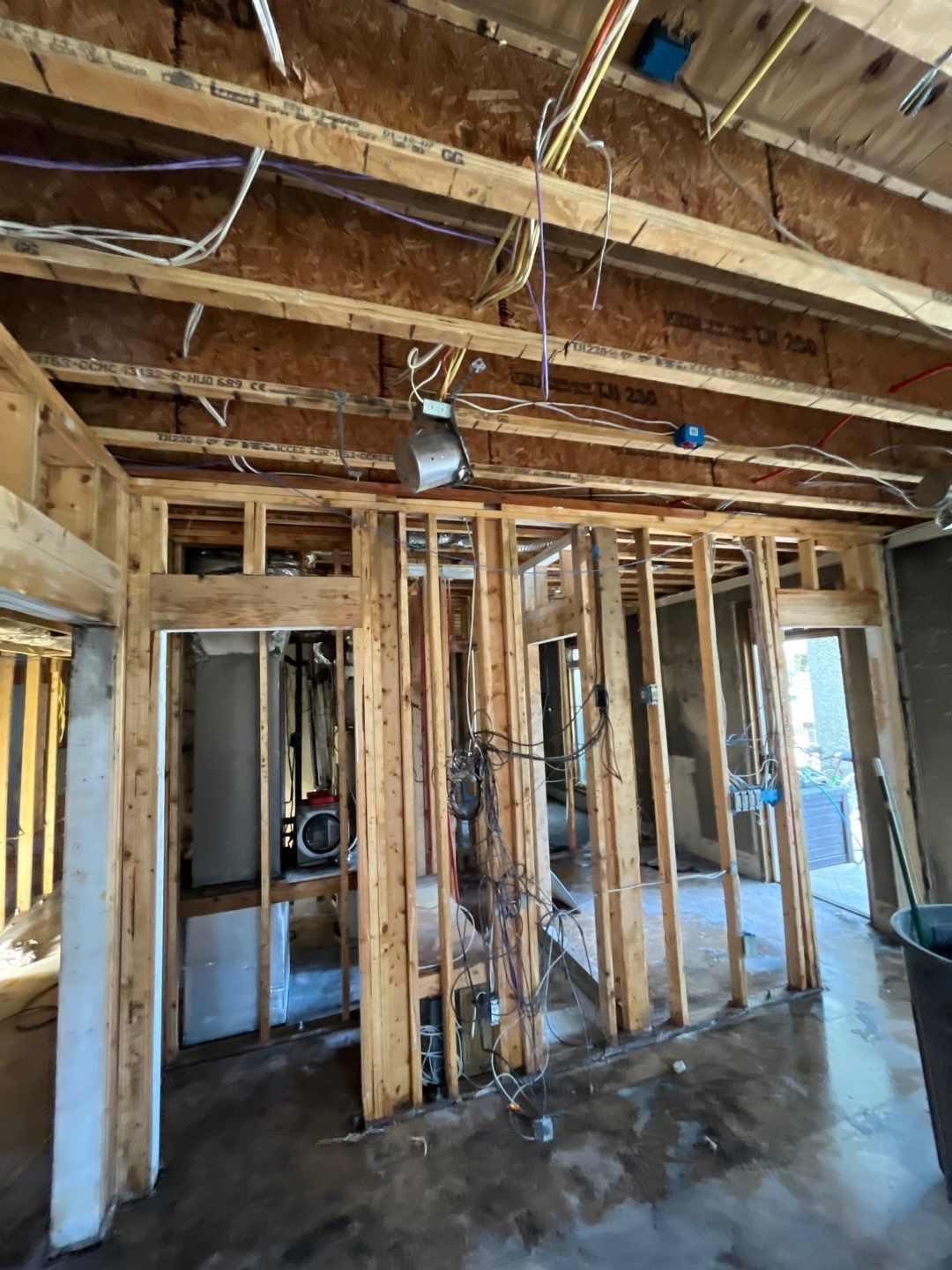
Step 2: Test Cuts/Test Wipes, Smell Test on Insulation
After we got started, we then furthered our investigation:
● During our demolition of the first floor, we performed test cuts & test wipes on the 2nd and 3rd floors to determine smoke/soot damage to building materials.
● Based off the findings from our test cuts & test wipes, we performed smell tests on the samples of insulation taken from the test cuts. Our findings from the smell test indicated that most of the 2nd floor needed to be demoed, which in turn repeated step 1.
Step 3: Soot & Surface Cleaning
We then shifted our focus on tackling the surface damage left after the demolition phase:
● Wiped down soot-covered cabinets, studs, walls, ceilings, doors, trim, and other surfaces using specialized dry-cleaning sponges and professional-grade degreasers.
● We used HEPA-filter vacuums to remove particles from all surfaces, vents, and hard-to-reach areas.
● We HEPA vacuumed, cleaned and restored salvageable ceiling fans, light fixtures, and decorative molding—all without requiring replacement!
This process not only removed surface damage but also helped prevent persistent contaminants and odors from spreading throughout the home.
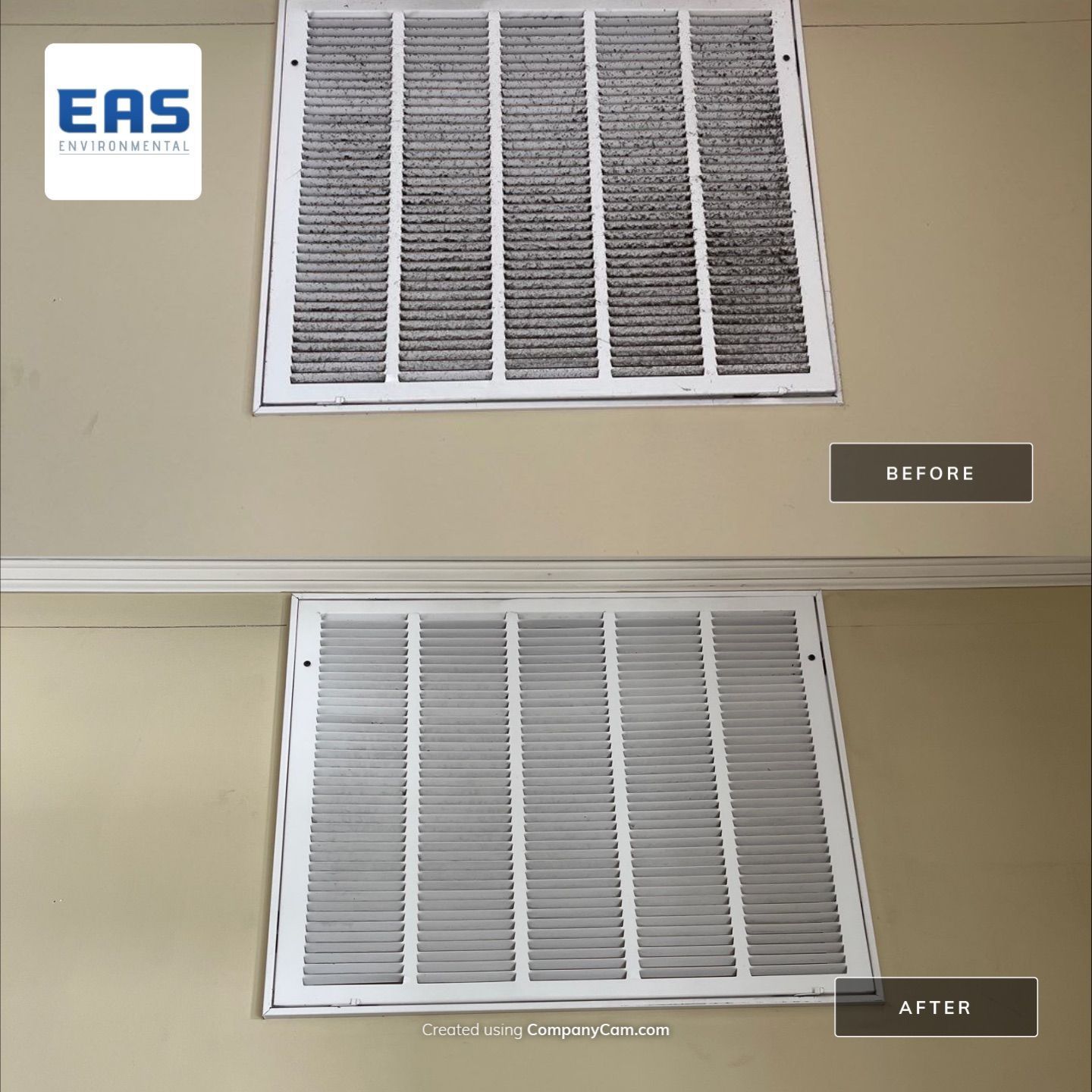
Step 4: Smoke Odor Removal
After the structure was clean, we could finally tackle the most stubborn problem: that lingering smoke odor. Here’s how we got rid of it:
● We set up air scrubbers equipped with HEPA filters which cleaned the air of fine particles.
● Thermal fogging was used—a safe, odor-neutralizing mist that gets deep into porous materials and wall cavities.
Hydroxyl generators ran continuously to break down and eliminate odor-causing molecules.
Step 5: Shellacking
After we fogged and ran the Hydroxyl generators, it was time to effectively block the last of the stubborn smoke odors.
● Prepped area for shellacking with RAM Board and plastic.
● We used shellac on all studs, open cavities, and exposed framing to provide a permanent barrier against the smoke odor.
Step 6: Pass Tape Lift Test
After previous steps have been taken, we still need to pass the Tape Lift Test to ensure no more soot was left behind. We HEPA vacuumed the floors two more times in preparation of the tape samples being taken, which needed to be approved by the Hygienist appointed by the Homeowner. After we passed, we conducted our final breakdown of equipment!
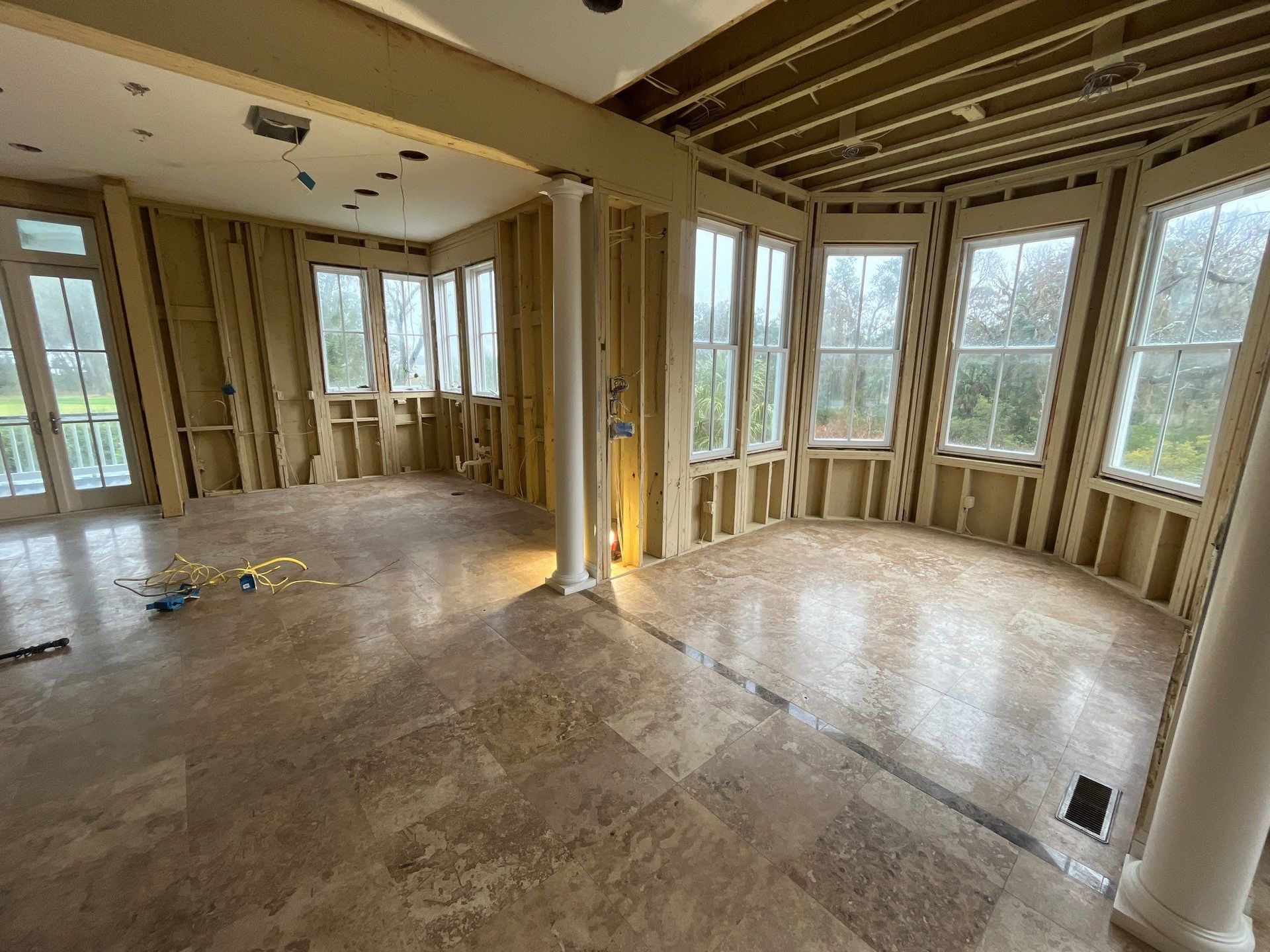
Conclusion
This luxury home in Daufuskie Island was completely engulfed with soot and smoke damage, leaving behind a heavy smoke odor that never would have subsided if it weren’t for our team. The process took many man-days over the course of several weeks spanning from October to February. The expert fire mitigation process included the demolition of multiple floors, surface cleaning & soot removal, and advanced odor elimination procedures. Once all the necessary steps were taken, and the assigned hygienist passed our tape test samples, we can proudly say that EAS Environmental restored this home to its pre-loss condition, all without having to tear everything out! The homeowner thought they’d lose all their cabinets, but we successfully cleaned and restored them. We also salvaged and returned an extremely large amount of the crown molding on both the 2nd and 3rd floors, as well as all the ceiling fans and vents which were deep cleaned. Our goal is always to preserve as much as possible while ensuring the home is safe, healthy, and fully restored. All in all, the homeowner was very pleased!
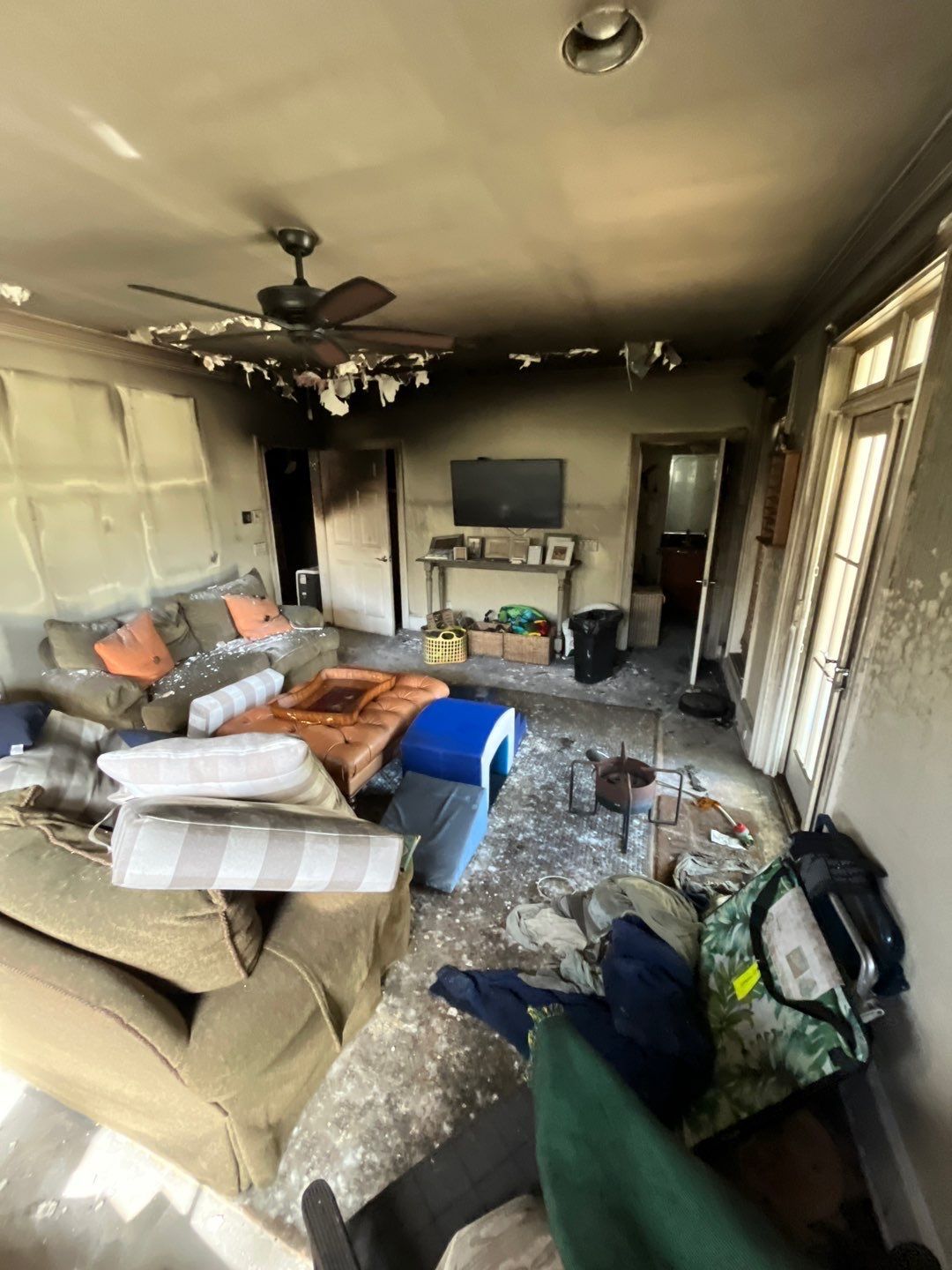
Contact EAS Environmental Today!
EAS Environmental will do everything we can to ensure your experience with us is excellent.
Request A FREE Estimate
Request a Free Estimate Form
Checkout Recent Post

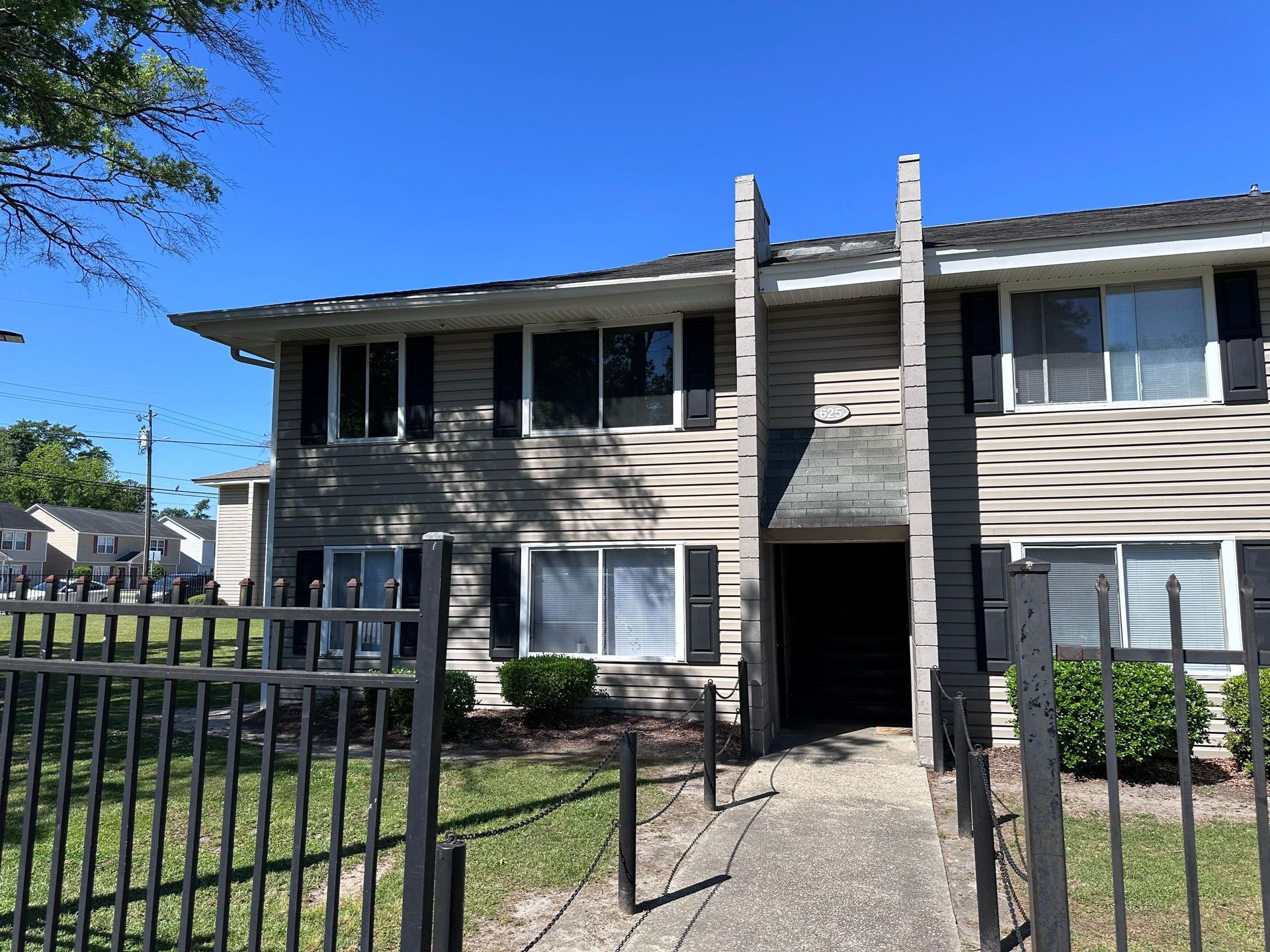
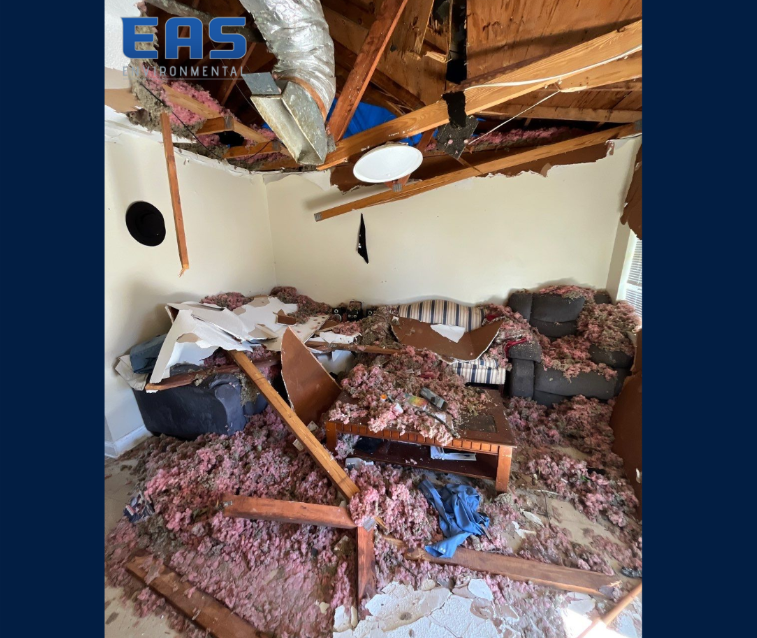
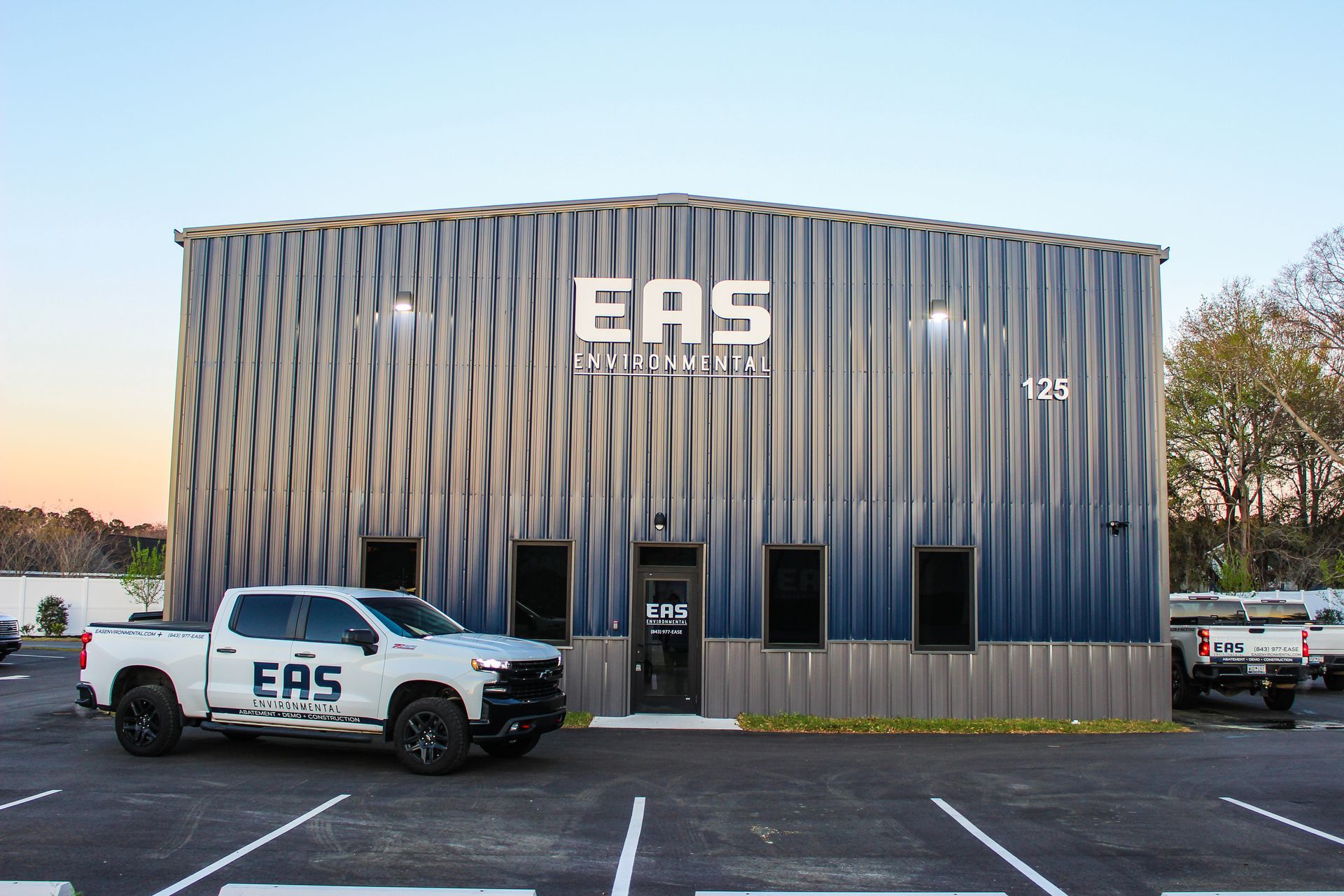
Got a Question? We’re Here to Help.
You can arrange an appointment or make an enquiry by phone or email, orget in touch to us via our contact form.
